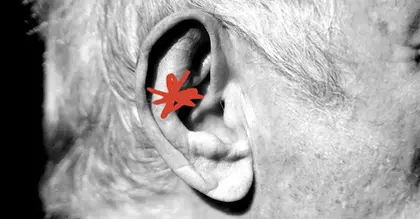
- Individuals with prediabetes, which involves elevated blood glucose (sugar) levels that do not meet the criteria for a diabetes diagnosis, are at a very high risk of progressing to diabetes.
- Clinical guidelines for delaying and preventing type 2 diabetes in individuals with prediabetes emphasize the importance of weight loss using lifestyle interventions or medications.
- A recent study showed that lifestyle interventions could lead to the normalization of glucose regulation in the absence of weight loss, and such a reversal of prediabetes was sufficient to reduce future risk of type 2 diabetes.
- These results suggest that clinical guidelines for type 2 diabetes prevention should also focus on normalizing blood glucose control in addition to achieving weight loss targets.
More than
Individuals with prediabetes are at a very high risk of developing diabetes, with about
The effective management of prediabetes can help prevent or delay type 2 diabetes and its complications, including cardiovascular conditions, kidney disease, and neuropathy.
Current guidelines for preventing the progression from prediabetes to diabetes focus on weight loss achieved through either lifestyle modifications or medications.
A recent study published in
Specifically, the study found that individuals with prediabetes who achieved healthy glucose regulation but did not lose weight after a year of receiving lifestyle modifications had a significantly lower future risk of developing diabetes than their counterparts who did not show prediabetes reversal or weight loss.
In addition, these two groups differed in the patterns of fat storage without showing differences in overall fat levels. Interestingly, individuals who achieved prediabetes reversal showed a greater reduction in belly fat (visceral adipose tissue) after 1 year than those who did not achieve healthy blood glucose levels.
Independent of the risk of developing type 2 diabetes, prediabetes is also associated with an increased risk of cardiovascular disease.
Sustained weight loss is difficult for most to achieve, and a focus on achieving normal glucose regulation could help individuals with prediabetes reduce long-term health risks.
One of the study authors, Andreas Birkenfeld, MD, PhD, professor of medicine at the University Hospital Tübingen in Germany, told Medical News Today that their study demonstrates that “a lifestyle intervention can bring prediabetes into remission, meaning back to normal glucose values, even without weight loss (even with modest weight gain), and this remission cuts future type 2 diabetes risk by [approximately] 70% over up to 10 years.”
Lifestyle interventions, including dietary changes and physical exercise, that facilitate weight loss can help reduce the risk of developing type 2 diabetes and cardiovascular issues. These interventions that facilitate weight loss are also effective in normalizing impaired glucose regulation.
In a previous study conducted by Birkenfeld and his colleagues, individuals who lost 5% or more of their initial weight over a 1-year follow-up period and showed a remission of prediabetes were at a 73% lower risk of developing type 2 diabetes in the future than those who only achieved weight loss without a reversal of prediabetes.
This data suggested an important role of normalizing blood glucose regulation along with weight loss in reducing future diabetes risk.
In other words, the researchers had previously shown that prediabetes reversal accompanied by weight loss resulted in lower future type 2 diabetes risk than weight loss alone.
Lifestyle interventions, especially physical exercise, can facilitate improvements in blood glucose control, even in the absence of weight loss.
Using the same dataset as their prior study, the researchers assessed the risk of future diabetes in a group of individuals who failed to lose weight but showed prediabetes reversal.
Moreover, the researchers examined the underlying metabolic differences between this group of individuals, who achieved prediabetes remission after a year of lifestyle interventions without weight loss, and their counterparts who failed to achieve both normal glucose regulation and weight loss.
From the 1,105 participants with prediabetes enrolled in the original study, the researchers focused on the data from 234 participants who did not achieve weight loss.
Fifty-one participants from this cohort of 234 individuals who did not achieve weight loss showed prediabetes remission after a year of lifestyle interventions, whereas the remaining 183 individuals did not achieve achieve healthy glucose regulation.
The researchers then compared the risk of developing diabetes over an average of approximately 5 years among these two groups of participants who did not show weight loss.
They found that individuals who achieved typical glucose regulation, without weight loss or even with weight gain, after a year of lifestyle interventions were at a 70% lower risk of developing type 2 diabetes over the 5-year period compared with those who did not show prediabetes reversal.
These results highlight the importance of achieving glycemic control for reducing the risk of type 2 diabetes and that weight loss may not be necessary to reduce future diabetes risk.
The researchers then examined the mechanisms underlying the improvement in blood glucose control in the absence of weight loss.
Blood glucose levels increase after a meal, stimulating the release of the hormone insulin by the beta-cells in the pancreas. Insulin then induces the muscles, liver, and adipose (fat) tissue to take up and store glucose.
A decline in the responsiveness or sensitivity of these tissues to insulin is observed in type 2 diabetes, leading to elevated blood sugar levels.
In the present study, participants who reverted to typical glucose regulation showed improved insulin sensitivity and increased insulin secretion by beta-cells in the pancreas.
Studies have shown changes in the pattern of fat distribution in the body in obesity and type 2 diabetes, with these patterns influencing the body’s ability to respond to insulin. Excess fat in the body is stored as either visceral adipose tissue or subcutaneous adipose tissue.
Visceral adipose tissue is the fat that surrounds the organs in the abdomen, including the stomach, liver, and intestines, and is associated with an increased risk of diabetes and cardiovascular conditions. Notably, excessive accumulation of fat in the visceral adipose tissue causes it to secrete inflammatory molecules that contribute to reduced insulin sensitivity.
In contrast, subcutaneous adipose tissue is found underneath the skin and is associated with increased insulin sensitivity. Subcutaneous adipose tissue can secrete adiponectin, a hormone that has anti-inflammatory properties and improves insulin sensitivity.
In the present study, the researchers found that individuals who achieved prediabetes remission without losing weight showed an increase in subcutaneous fat accumulation during the 12-month follow-up period, without any changes in visceral adipose.
In contrast, the participants who did not show prediabetes reversal showed an increase in visceral adipose tissue without showing a change in subcutaneous adipose tissue levels.
Adiponectin levels were elevated in individuals who achieved improvements in glucose regulation but not in those who failed to do so.
Thus, contrasting body fat distribution patterns were observed in the two groups, depending on whether or not they achieved prediabetes remission. Importantly, there were no differences in body composition, including total fat levels, in these groups.
Study co-author Reiner Jumpertz-von Schwartzenberg, MD, a professor at the University of Tubingen, noted that “this reversal of prediabetes in the absence of weight loss was] likely via better insulin sensitivity, improved beta-cell function, and a shift of fat toward subcutaneous rather than visceral depots.“
“These findings argue for guidelines for diabetes prevention should add glycemic remission targets, in addition to weight loss goals,” Jumpertz-von Schwartzenberg told us.
Similarly, Sonia Caprio, MD, a professor of pediatrics specializing in endocrinology at Yale School of Medicine, who was not involved in this study, told MNT that:
“These data uncover essential pathways for prediabetes remission without weight loss. Together, these data indicate that there is a weight-independent component of glycemic status, which is related to body fat distribution.”
Caprio, however, noted that the study did not directly evaluate changes in beta-cell function and insulin sensitivity, and these measurements were based on “surrogate parameters”.
“It would be helpful to use stronger metabolic studies in order to better understand the underlying mechanism driving the changes in insulin secretion, insulin sensitivity, and abdominal fat tissue seen in this study,” she added.
The researchers note that people with prediabetes should focus not only on weight loss but also on improving blood glucose regulation and body fat distribution patterns.
Binkenfeld advised:
“Don’t focus on the scale alone — aim to normalize glucose [by reaching] American Diabetes Association’s criteria for ‘normal glucose regulation’ through lifestyle that boosts insulin sensitivity and reduces visceral fat. Achieving remission matters more for diabetes prevention than hitting a specific weight-loss number.”
Lifestyle interventions for improving blood glucose regulation and body composition generally involve increasing physical activity and dietary modifications.
Studies have shown that physical exercise exerts anti-inflammatory effects, helps reduce visceral fat, and improves insulin sensitivity. Current guidelines for physical activity recommend engaging in 150 minutes of moderate aerobic activity, such as walking or swimming, per week.
Engaging in resistance training 2-3 times a week in addition to aerobic exercise is also effective in reducing blood glucose levels.
Dietary patterns such as the Mediterannean diet and the DASH diet are associated with lower visceral fat accumulation and improvements in blood glucose regulation.
These diets generally include complex, fiber-rich carbohydrates and healthy unsaturated fats, and are low in sugars, processed foods, and saturated fats. Sources of healthy carbohydrates include whole grains, fruits, non-starchy vegetables, and legumes, whereas foods rich in healthy fats include seeds, nuts, olive oil, and fatty fish.
Getting adequate sleep and regulating stress levels are also essential for normalizing blood glucose levels.





